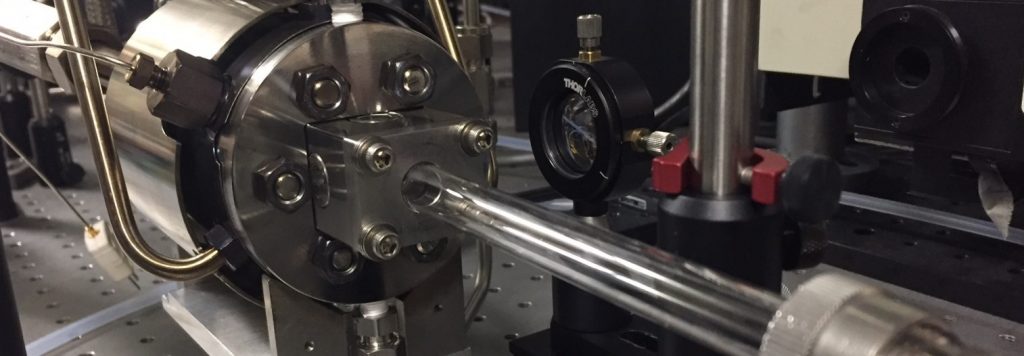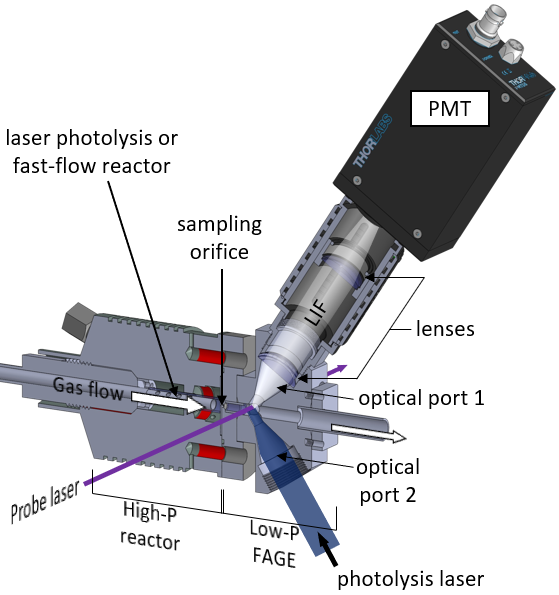High Pressure Fluorescence Assay for Gas Expansion (FAGE) for quantification of short-lived reaction intermediates

Technical Details
Many important gas-phase processes, such as combustion or the atmospheric processing of pollutants, are complex networks of chemical reactions that occur simultaneously and involve numerous intermediate and product species. These chemical networks are driven by highly reactive radical intermediates that are difficult to detect and quantify experimentally, especially at elevated pressures. However, the detection of these radicals directly from a reacting gas mixture can provide the key to understanding the entire network.
To probe such radicals and other key chemical species, we are developing a new application for Fluorescence Assay by Gas Expansion (FAGE)—a well-established technique, typically used to detect OH and HO2 radicals in the atmosphere. We sample (expand) a small amount of gas from a high-pressure reactor into a low-pressure chamber, where gas collision frequency is sufficiently low to allow the detection of molecules by laser-induced fluorescence (LIF). We employ either photolysis reactors, in which reactions are initiated by a laser pulse, or fast-flow reactors in which chemistry is initiated thermally, as shown in the schematic (Figure 2). Our apparatus enables versatile detection strategies: some species (e.g., OH and CH2O) are detected directly by LIF; others (e.g., HO2) are converted to OH by reaction with NO after expansion and then detected; still others (e.g., H2O2) are photolyzed after expansion and OH fragment detected.
Key Contributions
- When completed, this apparatus will quantify reaction intermediates that are not reliably detected by other means, enhancing our ability to comprehensively probe complex reaction networks
- Accurate, quantitative measurements of key radicals will provide valuable benchmarks for comparison with detailed chemical models
PI: Leonid Sheps
